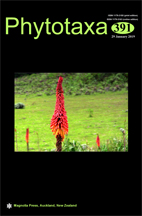Abstract
A comparative study of the leaf microstructures of 19 taxa belonging to the Persicaria sect. Cephalophilon and related four Koenigia taxa was performed by LM and SEM to evaluate their systematic significance. Both amphistomatic and hypostomatic leaves were observed in the taxa studied. The stomatal size ranged from 17.04–41.96 × 13.41–37.30 μm, and stomata on the adaxial side were larger than those on the abaxial side in general. Anomocytic stomata occurred most commonly, but more than one type of stomata was observed on the same surface. Paracytic stomata was found in both Persicaria palmata and P. criopolitana. The epidermal cells usually have straight to sinuate anticlinal cell walls (ACW), and the ACW on the abaxial side of most taxa is much more undulated than that on the adaxial side. Cuticular striation was observed in most of the studied taxa, which was restricted to only the adaxial side. Two types of crystals were observed: druse and prismatic, and seven types of trichome were recognized: five types of non-glandular trichomes (stellate with smooth surface, multiseriate with either smooth or striated surface, and uniseriate with either smooth or papillose surface), and two types of glandular trichomes (peltate and long-stalked pilate). The leaf micromorphology in this study was categorized into five types based on the stomata, epidermis, crystal and trichome, as further systematic significance of the leaf epidermal characters within the P. sect. Cephalophilon are discussed. In addition, we propose a new taxonomic combination in the P. sect. Cephalophilon.

